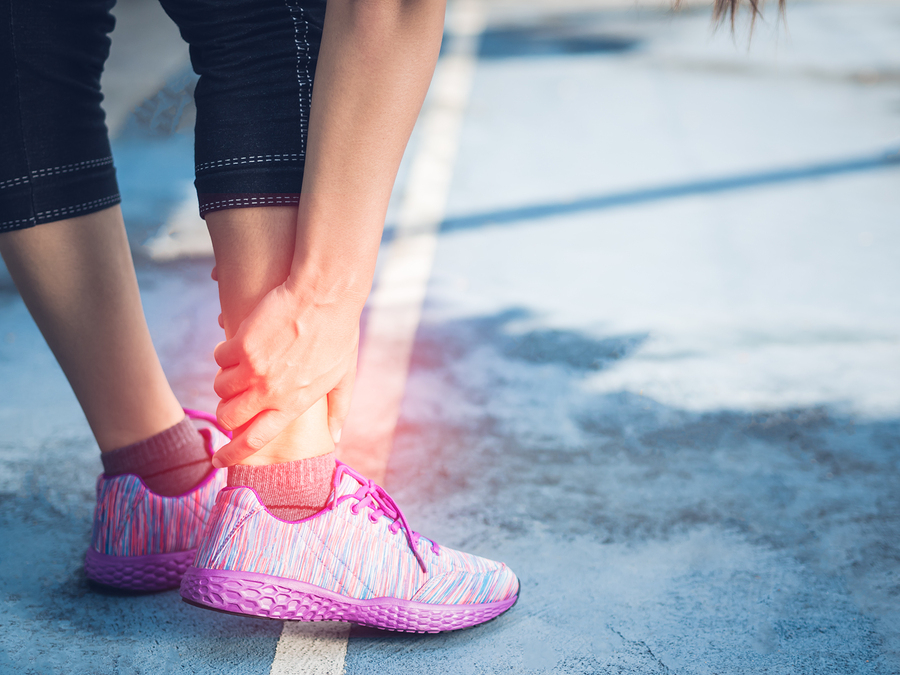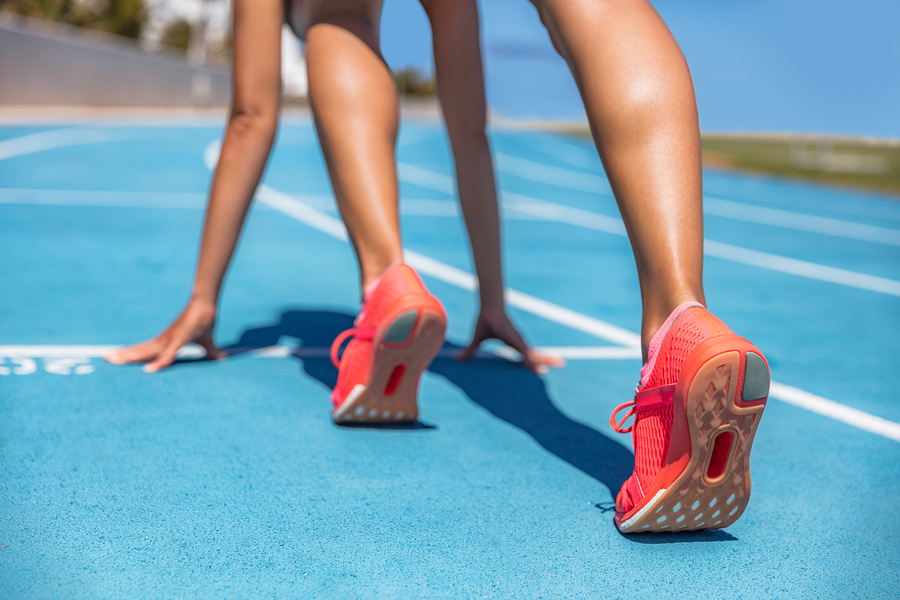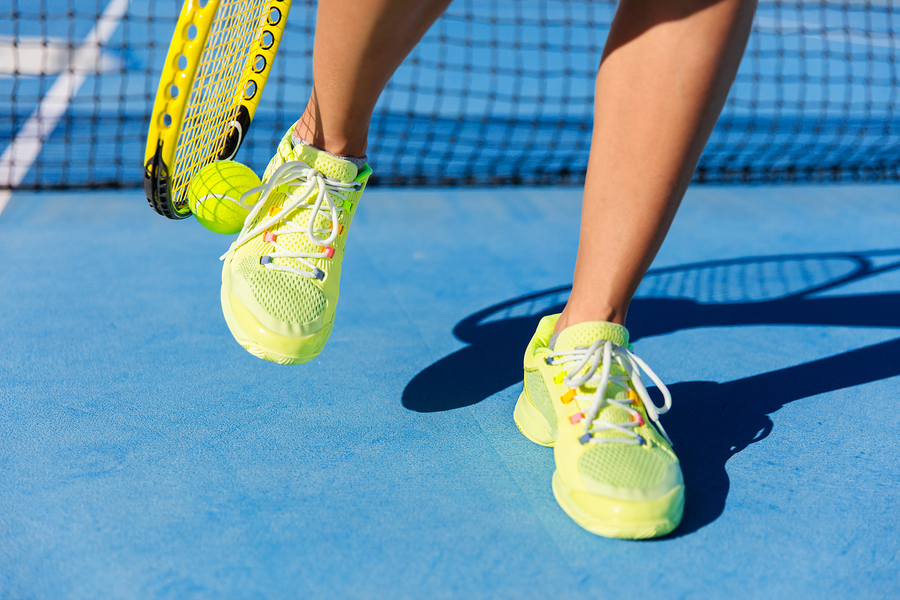The health benefits of regular jogging and running are well-known:
- Improved cardiovascular health
- A slow in cellular aging
- Reduced risk of cancer
- Lower chance of future bone or muscle damage
Best of all, there’s almost no barrier to entry – no wonder it’s quickly becoming one of Australia’s favourite ways to stay in-shape.
Not that we said “almost”.
That’s because while anyone can go on a jog or a run, to do so without risking potential injury and pain requires proper footwear and biomechanics.
Our Highett physio explains: why the right footwear matters
Picture a metal baton striking a wall. You’ll notice that while the baton doesn’t bend, it does vibrate and ring as it absorbs the impact.
That’s what happens to your legs every time you take a step, albeit less violently.
Each step sends force up into your body, which your bones and leg muscles absorb.
And your feet put up with this every time you go out for a run, the front foot taking 2-3x your bodyweight in force – over time, this can cause damage such as microtears.
Strong muscles, ligaments and bones are one essential element in protecting yourself from leg pains.
The other? Proper footwear.
Proper shoes absorb more of this impact for you, relieving pressure on your knees and joints.
Additionally, they also provide extra traction and grip: if you run on gravel, for instance, this can’t be ignored (more on that below).
Running vs training shoes – does it matter?
Yes, it does!
If you’re already a regular gym-goer, odds are you’ve got a trusty pair of trainers.
It can be tempting to just put them on for your first foray into running.
Here’s the thing though: running shoes are not the same as training shoes.
Training shoes are more of a one-size-fits-all type of athletic shoe. If you plan on taking your running to the next level, you need proper running shoes.
Compared to training shoes, running shoes provide:
- Greater sole flexibility: running shoes are optimised for heel-to-toe movements, whereas training shoes are more general and designed for multi-directional movement
- Heel drop: when most people run or jog, they strike the ground heel-first – as such, the heels of running shoes tend to be much thicker, with extra cushioning
Both of these make running shoes the obvious choice for avid runners.
Choosing proper running shoes: our basic how-to
There’s no perfect fit that’ll work for every single person out there.
The ideal running shoe for you will vary depending on a range of factors, and should be left to somebody with experience catering for a whole range of shoes and runners.
That said, there are a couple of basic things you’ll need to account for…
1) Look at surfaces
What type of surface do you run on? This directly impacts the type of shoe you end up choosing.
- Do you run on paved surfaces? Road shoes are designed with thicker cushioning to accommodate.
- Do you run off-trail? Trail-running shoes use aggressive treads to enhance your grip and stability
Depending on the surfaces they’re designed for, shoes may use different treads, cushioning or materials. Each of these impacts traction, breathability and flexibility.
2) How do you run?
The way you run changes the amount of force that goes into your feet and therefore requires different shoes.
Conveniently, most shoe brands accent the thickest parts of the sole to help you figure out what type of running-style that pair is designed for.
For example:
- If the wear pattern is centralised to the ball of the foot and a small section of heel, you’re looking at a pair designed for a neutral running-style
- In contrast, patterns that are centred on the inside or outside of the heel generally indicate shoes designed for runners that use those parts of their heel more
This can be a little bit hard to figure out by yourself – luckily, most specialty shoe stores or athletic stores can help you figure it out.
3) How does it fit?
It sounds like a no-brainer – however, it’s a lot more complicated than just finding a pair that feels comfy!
Your running shoes should be snug, but not tight. Shoes that are too small can lead to chafing and blisters – ideally, you should have just enough toe room to slightly wiggle your toes.
Additionally, don’t be afraid to size up.
Most shoe sizes are calculated based on the size of the sole, not the room inside. Thicker walls and cushioning can mean that two size 8s can feel completely different despite being the same size. Just compare a pair of canvas shoes to running shoes.
4) Look at your feet
In particular, you’ll want to look at foot size, arch and shape, all three of which can change which shoe best suits you.
For example, if your foot is wider than average, you’ll need to look for shoes to accommodate.
If you have high arches, choose shoes with insoles that match. Alternatively, you might like to consider orthotics.
Suffering foot or leg pain? Call our Highett physio
While we can’t come with you to the shoe store, we can help relieve any muscle pains that arise in your feet and legs!
The right footwear is half of the equation. The other is strong leg muscles.
With a brand-new clinic that’s just opened in Highett, Physio AUS is the place to be.
We specialise in in getting people back into sport, whether it’s due to an injury or a long absence. Using proven physiotherapy treatments backed up by science, we build strength in your legs.
Unlike other physiotherapists, we also look at how you run. This allows us to design routines that get you moving while minimising your risk of injury.
Give our team a call to find out how we can help you. Alternatively, click here to book your first session.
- Call our Highett physio clinic on 1300 392 552

 1300 392 552
1300 392 552


omg iv had at least 10 pairs of runners over the past 12 months with asics brooks /terrible rubbish with these shoes in 2 months toe comes through the top mesh with in 2 months/just on sunday i did a 14k run in nike airs by yesterday the 28th same thing hole coming through on the left shoe/these dam things are not cheap around 260.00 a pair.foot locker have replaced them with another pair when i tell them whats happing m they say maybe you need to tape your toes down thith sports marsking tape are these people for real.so my point is what is the right runner/shoe who knowes .
Yep – it’s a tough one Kev.
A biomechanic assessment and programme to even out the force you put through the feet could be useful – but given the amount of running/walking you do it’s not uncommon for them to wear out quickly.